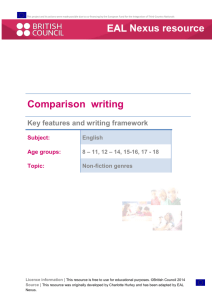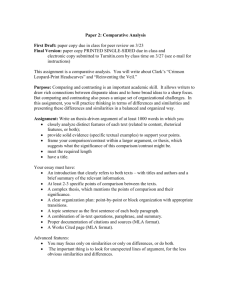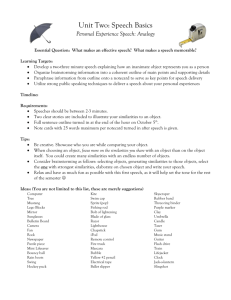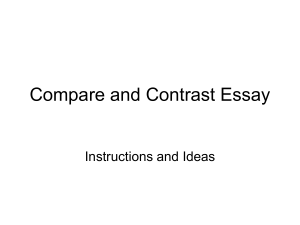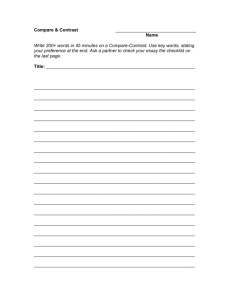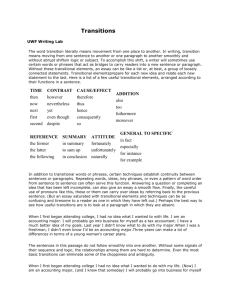Compare/Contrast Essay
advertisement
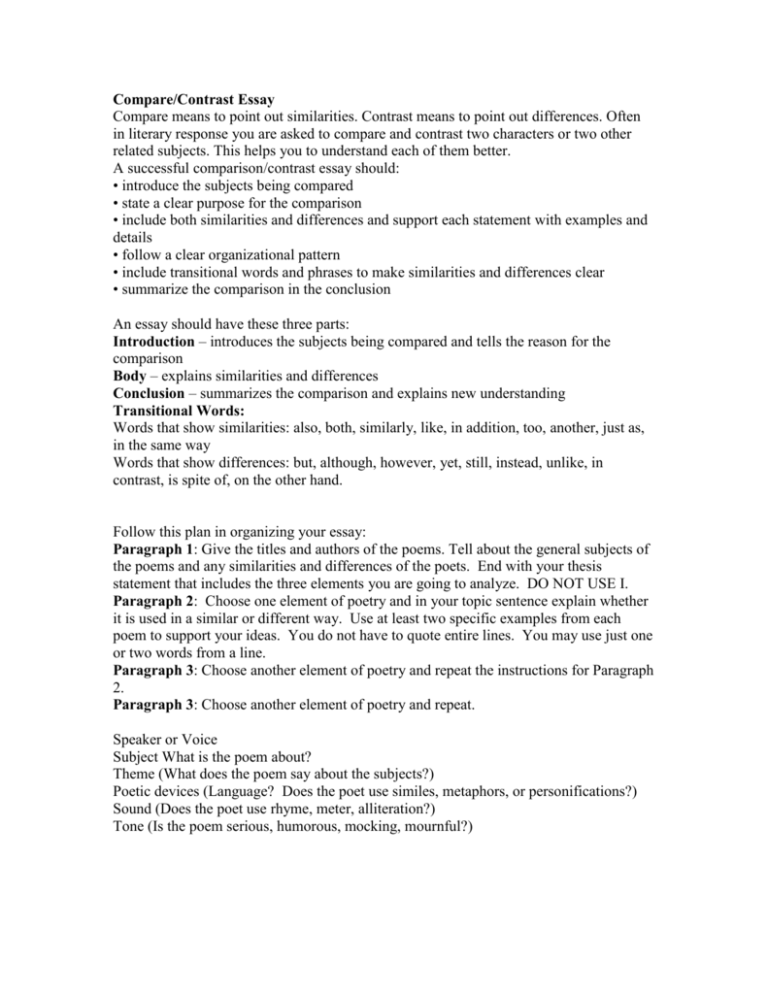
Compare/Contrast Essay Compare means to point out similarities. Contrast means to point out differences. Often in literary response you are asked to compare and contrast two characters or two other related subjects. This helps you to understand each of them better. A successful comparison/contrast essay should: • introduce the subjects being compared • state a clear purpose for the comparison • include both similarities and differences and support each statement with examples and details • follow a clear organizational pattern • include transitional words and phrases to make similarities and differences clear • summarize the comparison in the conclusion An essay should have these three parts: Introduction – introduces the subjects being compared and tells the reason for the comparison Body – explains similarities and differences Conclusion – summarizes the comparison and explains new understanding Transitional Words: Words that show similarities: also, both, similarly, like, in addition, too, another, just as, in the same way Words that show differences: but, although, however, yet, still, instead, unlike, in contrast, is spite of, on the other hand. Follow this plan in organizing your essay: Paragraph 1: Give the titles and authors of the poems. Tell about the general subjects of the poems and any similarities and differences of the poets. End with your thesis statement that includes the three elements you are going to analyze. DO NOT USE I. Paragraph 2: Choose one element of poetry and in your topic sentence explain whether it is used in a similar or different way. Use at least two specific examples from each poem to support your ideas. You do not have to quote entire lines. You may use just one or two words from a line. Paragraph 3: Choose another element of poetry and repeat the instructions for Paragraph 2. Paragraph 3: Choose another element of poetry and repeat. Speaker or Voice Subject What is the poem about? Theme (What does the poem say about the subjects?) Poetic devices (Language? Does the poet use similes, metaphors, or personifications?) Sound (Does the poet use rhyme, meter, alliteration?) Tone (Is the poem serious, humorous, mocking, mournful?) 1– Unsatisfactory Opening catches reader’s interest . Introduces the subjects being compared State a clear purpose for the comparison Includes both similarities and differences and supports each statement with examples and details Follows a clear organizational pattern Includes transitional words and phrases to make similarities and differences clear Summarizes the comparison in the conclusion Uses correct grammar Uses correct punctuation and capitalization Uses correct spelling Title Name Date Period Compare/Contrast Essay Rubric 2 Needs work 3 Good job 4 Excellent 1. Opening catches reader’s interest 0 1234 2. Introduces the subjects being compared 0 1 2 3 4 1. State a clear purpose for the comparison 0 1 2 3 4 2. Includes both similarities and differences 0 1 2 3 4 and supports each statement with examples and details 3. Follows a clear organizational pattern 0 1 2 3 4 4. Includes transitional words and phrases 0 1 2 3 4 to make similarities and differences clear 5. Summarizes the comparison in the conclusion 0 1 2 3 4 6. Uses correct grammar 0 1 2 3 4 7. Uses correct spelling 0 1 2 3 4 8. Uses correct capitalization and punctuation 0 1 2 3 4 Total______ x 2.5 Grade_____ Title_________________________ Name_________________________ Date_________________________ Response to Literature Writing Standard 2 If you use a number scale, divide the number of points earned by the number of traits. 0 = not evident 1 =minimal evidence of mastery 2 = adequate evidence of mastery 3 = strong evidence of mastery 4 = outstanding evidence of mastery Write responses to literature that _____Advance a judgment that demonstrates a comprehensive grasp of the significant ideas of works or passages. _____Support key ideas and viewpoints through accurate and detailed references to the text or to other works. _____Demonstrate awareness of the author’s use of stylistic devices and an appreciation of the effects created. _____Identify and assess the impact of perceived ambiguities, nuances, and complexities within text.

